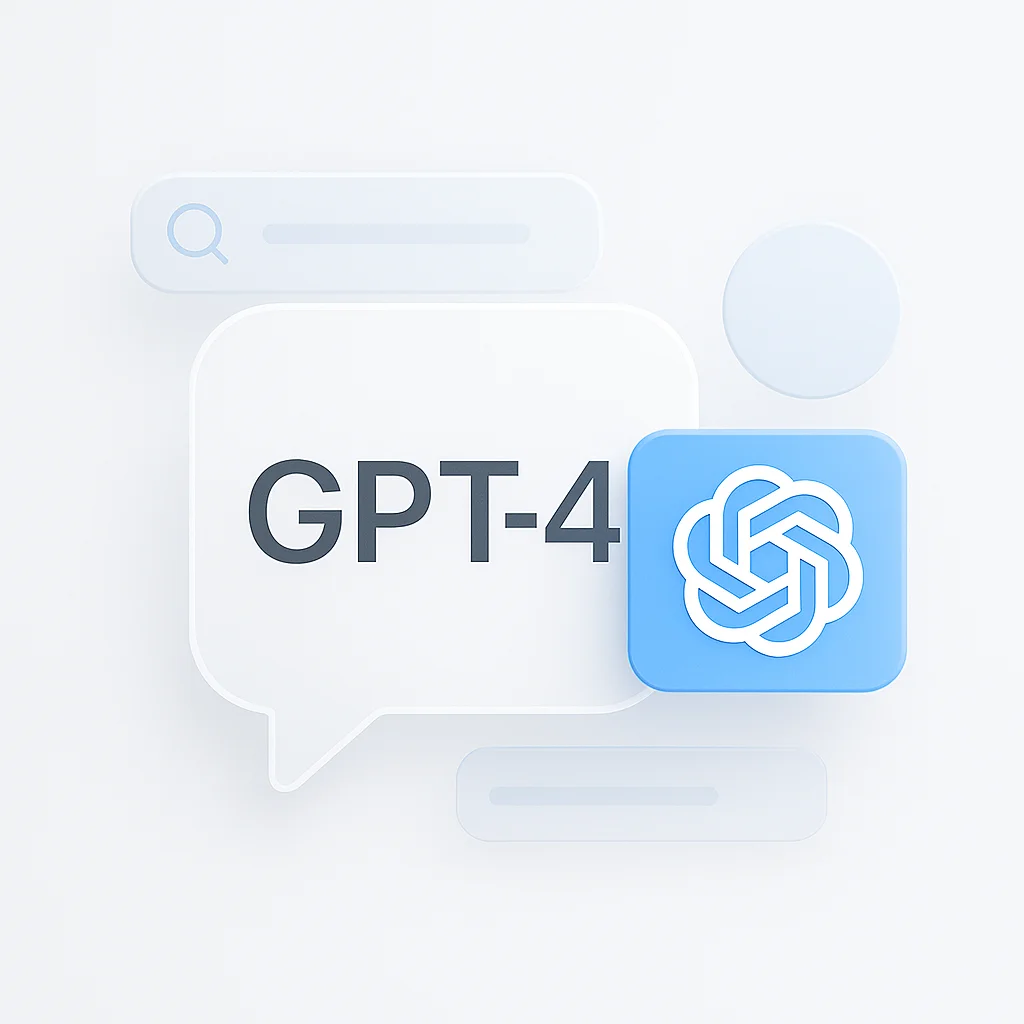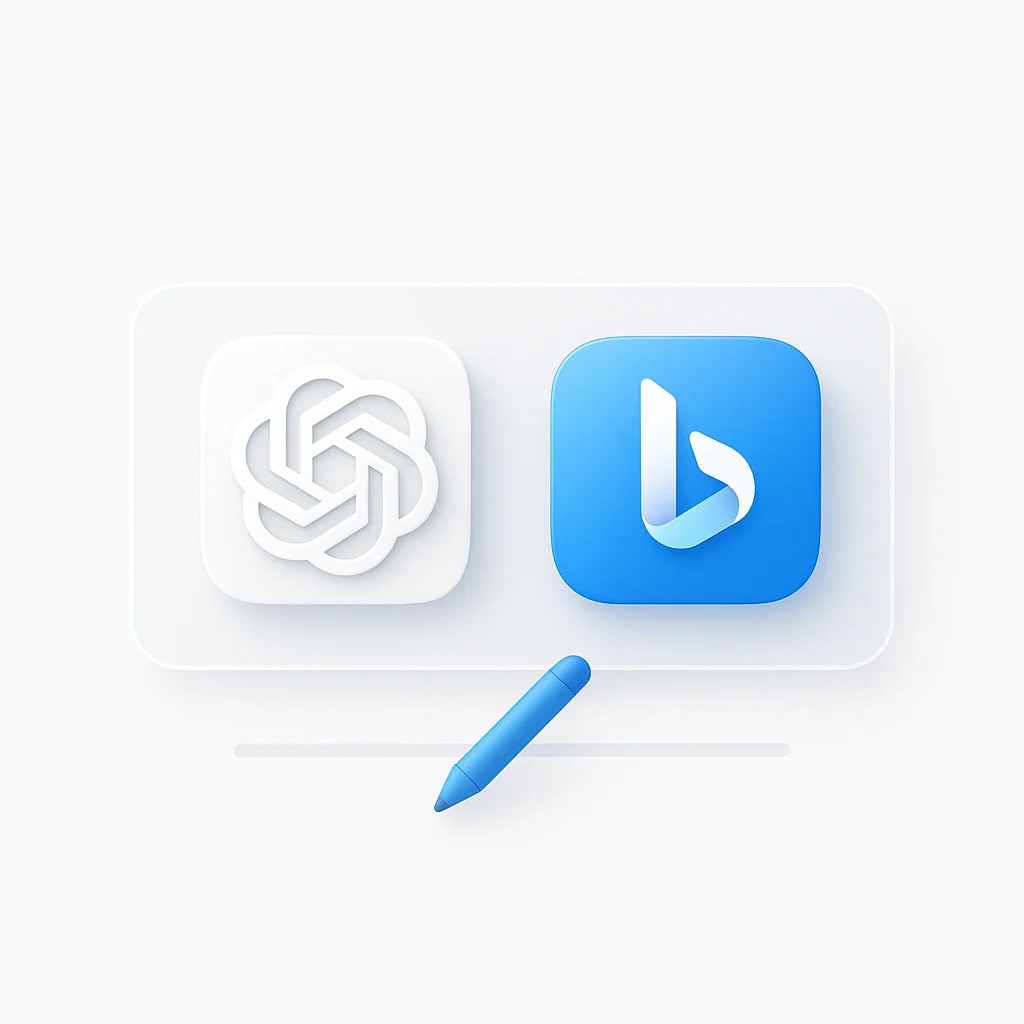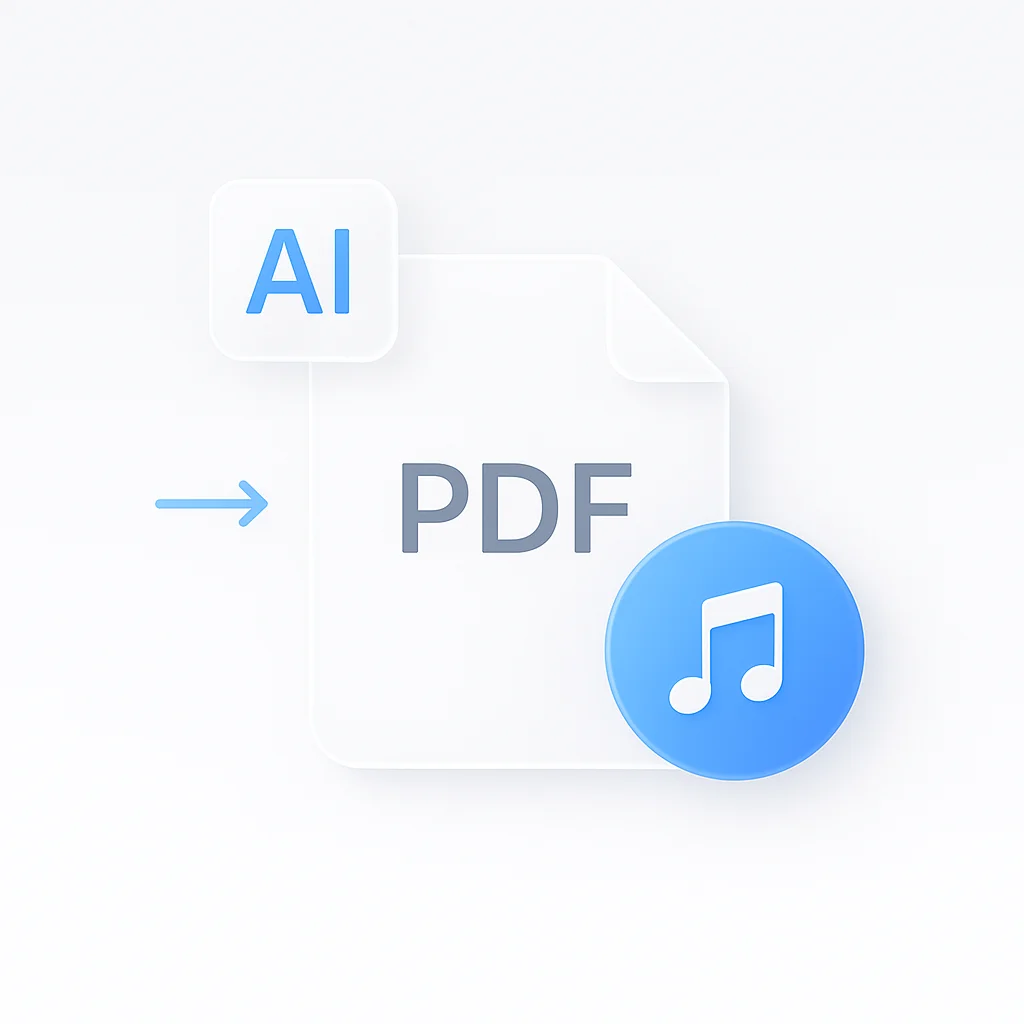Getting the most out of ChatGPT depends entirely on how you prompt it. The right prompt can transform generic responses into powerful, actionable insights that solve real problems. After analyzing thousands of user interactions and the latest developments in July 2025, we’ve compiled the most effective ChatGPT prompts that consistently deliver exceptional results.
What Makes a ChatGPT Prompt Effective?
An effective ChatGPT prompt combines clear instructions, specific context, and defined goals. The best prompts tell ChatGPT exactly what role to play, what information to consider, and what format to use for the response.
Top 100 ChatGPT Prompts by Category
Business & Marketing Prompts
1. Business Strategy Analysis
Act as a business strategist. Analyze [company/industry] and provide a detailed SWOT analysis. Include specific examples and actionable recommendations for each quadrant.2. Marketing Campaign Development
You are a marketing director. Create a comprehensive marketing campaign for [product/service] targeting [audience]. Include campaign objectives, key messages, channel strategy, and success metrics.3. Sales Email Templates
Write a sales email sequence for [product/service] that addresses [specific pain point]. Use a consultative selling approach and include social proof elements.4. Competitive Analysis
Act as a market research analyst. Compare [Company A] vs [Company B] in the [industry] space. Analyze their positioning, pricing, features, and market share.5. Customer Persona Development
Create a detailed customer persona for [product/service]. Include demographics, psychographics, pain points, goals, and preferred communication channels.Writing & Content Creation
6. Blog Post Structure
Create a detailed outline for a blog post about [topic]. Include an attention-grabbing headline, introduction hook, main sections with subheadings, and conclusion with call-to-action.7. Social Media Content Calendar
Develop a 30-day social media content calendar for [brand/industry]. Include post types, captions, hashtags, and optimal posting times for each platform.8. Email Newsletter Templates
Write an engaging email newsletter template for [industry/niche]. Include subject line, introduction, main content sections, and compelling call-to-action.9. Product Description Optimization
Rewrite this product description to be more compelling and conversion-focused: [current description]. Highlight benefits over features and include emotional triggers.10. Content Repurposing Strategy
Take this [blog post/article] and repurpose it into 5 different content formats: social media posts, email newsletter, video script, infographic outline, and podcast talking points.Productivity & Organization
11. Task Prioritization Matrix
Help me prioritize these tasks using the Eisenhower Matrix: [list tasks]. Categorize each task and provide recommendations for handling each quadrant.12. Meeting Agenda Creation
Create a structured meeting agenda for [meeting purpose] with [number] participants. Include time allocations, discussion topics, and action item tracking.13. Project Planning Template
Develop a project plan for [project name] with timeline, milestones, resources needed, and risk assessment. Include a Gantt chart structure.14. Time Blocking Schedule
Create a time-blocked daily schedule for [role/profession] that includes [specific responsibilities]. Optimize for productivity and include buffer time.15. Goal Setting Framework
Help me set SMART goals for [specific area]. Break down long-term objectives into quarterly and monthly milestones with actionable steps.Technical & Development
16. Code Review Checklist
Create a comprehensive code review checklist for [programming language/framework]. Include security, performance, maintainability, and best practices.17. Technical Documentation Template
Generate technical documentation for [software/API/system]. Include overview, installation instructions, usage examples, and troubleshooting guide.18. Database Schema Design
Design a database schema for [application type]. Include tables, relationships, indexes, and constraints with explanations for each design decision.19. API Documentation Generator
Create comprehensive API documentation for [API name]. Include endpoints, request/response formats, authentication, and code examples in multiple languages.20. Software Architecture Review
Analyze this software architecture: [description]. Identify potential bottlenecks, scalability issues, and suggest improvements with rationale.Education & Learning
21. Study Guide Creation
Create a comprehensive study guide for [subject/topic]. Include key concepts, practice questions, mnemonics, and review schedules.22. Lesson Plan Template
Develop a lesson plan for teaching [topic] to [grade level/audience]. Include learning objectives, activities, assessments, and differentiation strategies.23. Research Paper Outline
Create a detailed outline for a research paper on [topic]. Include thesis statement, main arguments, supporting evidence, and counterarguments.24. Language Learning Exercises
Design language learning exercises for [language] at [proficiency level]. Include vocabulary, grammar, speaking, and listening activities.25. Skill Development Roadmap
Create a learning roadmap for mastering [skill/technology]. Include prerequisites, learning resources, practice projects, and milestone assessments.Creative & Design
26. Creative Brief Generator
Generate a creative brief for [project type]. Include project overview, target audience, key messages, visual style, and success criteria.27. Storytelling Framework
Help me craft a compelling story about [topic/experience] using the hero's journey structure. Include character development and emotional arcs.28. Brand Voice Definition
Define a brand voice for [company/brand]. Include personality traits, communication style, tone variations, and do's and don'ts.29. Design Concept Development
Develop design concepts for [project]. Include mood boards, color palettes, typography choices, and visual hierarchy principles.30. Content Ideation Session
Generate 20 creative content ideas for [brand/industry] that would resonate with [target audience]. Include different content formats and engagement strategies.Personal Development
31. Self-Assessment Framework
Create a personal self-assessment for [area of development]. Include strengths, weaknesses, opportunities, and action steps for improvement.32. Habit Formation Plan
Help me develop a habit formation plan for [specific habit]. Include trigger identification, reward systems, and progress tracking methods.33. Decision-Making Framework
Guide me through a decision-making process for [specific decision]. Use a structured approach with pros/cons, consequences, and decision criteria.34. Personal Brand Strategy
Develop a personal brand strategy for [profession/industry]. Include value proposition, target audience, content themes, and networking approach.35. Life Planning Template
Create a comprehensive life planning template covering career, relationships, health, finances, and personal growth with actionable steps.Health & Wellness
36. Meal Planning Assistant
Create a weekly meal plan for [dietary preferences/restrictions]. Include shopping list, prep instructions, and nutritional balance.37. Workout Routine Designer
Design a [duration] workout routine for [fitness goal]. Include exercises, sets, reps, and progression plan suitable for [fitness level].38. Stress Management Toolkit
Develop a personalized stress management toolkit for [specific stressors]. Include immediate relief techniques and long-term strategies.39. Sleep Optimization Plan
Create a sleep optimization plan addressing [sleep issues]. Include sleep hygiene practices, environmental factors, and routine adjustments.40. Mindfulness Practice Guide
Design a mindfulness practice guide for [experience level]. Include different techniques, duration options, and integration into daily routine.Financial & Investment
41. Budget Planning Template
Create a comprehensive budget template for [income level/situation]. Include expense categories, savings goals, and debt management strategies.42. Investment Strategy Framework
Develop an investment strategy for [age/risk tolerance/goals]. Include asset allocation, diversification principles, and timeline considerations.43. Financial Goal Setting
Help me set and plan for financial goals: [specific goals]. Include timelines, required savings, and actionable steps to achieve each goal.44. Expense Tracking System
Design an expense tracking system for [lifestyle/income]. Include categories, tracking methods, and analysis frameworks for spending patterns.45. Retirement Planning Guide
Create a retirement planning guide for [current age/situation]. Include savings calculations, investment strategies, and milestone checkpoints.Customer Service & Support
46. Customer Service Scripts
Write customer service scripts for handling [specific situations]. Include empathy statements, problem-solving steps, and escalation procedures.47. FAQ Development
Create a comprehensive FAQ section for [product/service]. Include common questions, clear answers, and links to additional resources.48. Customer Feedback Analysis
Analyze this customer feedback: [feedback]. Identify themes, sentiment, and actionable insights for product/service improvement.49. Support Ticket Template
Create a support ticket template for [issue type]. Include information gathering questions, troubleshooting steps, and resolution tracking.50. Customer Journey Mapping
Map the customer journey for [product/service]. Include touchpoints, pain points, emotions, and improvement opportunities at each stage.Research & Analysis
51. Market Research Framework
Design a market research framework for [industry/market]. Include research questions, data collection methods, and analysis approaches.52. Data Analysis Template
Create a data analysis template for [data type]. Include visualization suggestions, key metrics, and insight generation methods.53. Competitor Intelligence
Develop a competitor intelligence report for [industry]. Include analysis framework, key metrics, and strategic recommendations.54. Survey Design Guide
Create a survey for [research purpose]. Include question types, logic flow, and best practices for response collection and analysis.55. Trend Analysis Framework
Analyze current trends in [industry/market]. Include trend identification, impact assessment, and strategic implications.Communication & Presentations
56. Presentation Structure
Create a presentation outline for [topic/purpose]. Include opening hook, main points, supporting evidence, and compelling conclusion.57. Meeting Facilitation Guide
Develop a meeting facilitation guide for [meeting type]. Include preparation steps, facilitation techniques, and follow-up actions.58. Negotiation Strategy
Create a negotiation strategy for [situation]. Include preparation steps, tactics, concession planning, and relationship management.59. Public Speaking Framework
Design a public speaking framework for [speech type]. Include content structure, delivery techniques, and audience engagement strategies.60. Conflict Resolution Process
Develop a conflict resolution process for [situation type]. Include de-escalation techniques, problem-solving steps, and follow-up procedures.Advanced Prompt Engineering
61. Multi-Step Problem Solving
Break down this complex problem into manageable steps: [problem]. For each step, provide specific actions, required resources, and success criteria.62. Role-Based Perspective Analysis
Analyze [situation/decision] from the perspective of [role 1], [role 2], and [role 3]. Include each perspective's priorities, concerns, and recommendations.63. Scenario Planning
Create three scenarios (best case, worst case, most likely) for [situation]. Include probability assessments, impact analysis, and contingency plans.64. Root Cause Analysis
Conduct a root cause analysis for [problem]. Use the 5 Whys technique and fishbone diagram approach to identify underlying causes and solutions.65. Decision Tree Creation
Create a decision tree for [decision type]. Include decision points, possible outcomes, probability assessments, and recommended paths.Industry-Specific Prompts
66. Legal Document Analysis
Analyze this legal document: [document type]. Identify key clauses, potential risks, and areas requiring attention. Note: This is for informational purposes only.67. Medical Information Summary
Summarize medical information about [condition/treatment]. Include symptoms, causes, treatments, and when to seek professional help. Note: Not medical advice.68. Real Estate Investment Analysis
Analyze this real estate investment opportunity: [property details]. Include cash flow projections, ROI calculations, and risk assessment factors.69. Educational Curriculum Design
Design a curriculum for [subject/skill]. Include learning objectives, lesson progression, assessment methods, and resource requirements.70. Manufacturing Process Optimization
Analyze this manufacturing process: [process description]. Identify bottlenecks, inefficiencies, and improvement opportunities with implementation plans.Creative Problem Solving
71. Brainstorming Facilitator
Facilitate a brainstorming session for [challenge/opportunity]. Use different creative techniques and generate diverse, innovative solutions.72. Innovation Framework
Apply design thinking methodology to [problem/challenge]. Include empathy mapping, problem definition, ideation, prototyping, and testing phases.73. Alternative Solution Generator
Generate 10 alternative solutions for [problem]. Include conventional and unconventional approaches with pros/cons for each.74. Creative Constraint Application
Solve [problem] using these constraints: [constraints]. Show how limitations can drive creative solutions and unexpected innovations.75. Analogical Problem Solving
Solve [problem] by finding analogies from [different domain]. Use the analogy to generate new perspectives and solution approaches.Quality Assurance & Testing
76. Test Case Development
Create comprehensive test cases for [product/feature]. Include positive/negative scenarios, edge cases, and acceptance criteria.77. Quality Checklist Creation
Develop a quality checklist for [process/product]. Include checkpoints, criteria, and validation methods for each quality dimension.78. Risk Assessment Framework
Conduct a risk assessment for [project/process]. Include risk identification, probability/impact analysis, and mitigation strategies.79. Performance Benchmark Setting
Establish performance benchmarks for [system/process]. Include KPIs, measurement methods, and improvement targets.80. Compliance Audit Guide
Create a compliance audit guide for [regulation/standard]. Include audit procedures, documentation requirements, and remediation steps.Automation & Efficiency
81. Process Automation Analysis
Analyze [process] for automation opportunities. Identify repetitive tasks, automation tools, implementation steps, and ROI projections.82. Workflow Optimization
Optimize this workflow: [workflow description]. Identify bottlenecks, redundancies, and improvement opportunities with implementation plan.83. Standard Operating Procedure
Create a standard operating procedure for [process]. Include step-by-step instructions, quality checkpoints, and troubleshooting guides.84. Efficiency Metrics Dashboard
Design an efficiency metrics dashboard for [department/process]. Include KPIs, visualization methods, and action triggers.85. Resource Allocation Optimizer
Optimize resource allocation for [project/department]. Include resource requirements, constraints, and allocation strategies.Advanced Communication
86. Stakeholder Communication Plan
Create a stakeholder communication plan for [project/initiative]. Include stakeholder analysis, communication methods, and feedback mechanisms.87. Crisis Communication Strategy
Develop a crisis communication strategy for [scenario]. Include messaging framework, channel strategy, and stakeholder management.88. Change Management Communication
Create a change management communication plan for [organizational change]. Include awareness, desire, knowledge, and reinforcement strategies.89. Executive Summary Generator
Create an executive summary for [report/proposal]. Include key findings, recommendations, and action items in a concise, compelling format.90. Persuasive Argument Framework
Structure a persuasive argument for [position/proposal]. Include evidence, logical reasoning, emotional appeals, and objection handling.Innovation & Future Planning
91. Technology Trend Analysis
Analyze emerging technology trends in [industry]. Include trend identification, impact assessment, and strategic implications for organizations.92. Future Scenario Planning
Create future scenarios for [industry/organization] over [timeframe]. Include driving forces, scenario development, and strategic implications.93. Innovation Opportunity Mapping
Map innovation opportunities in [market/industry]. Include market gaps, technology enablers, and commercialization strategies.94. Strategic Roadmap Development
Develop a strategic roadmap for [goal/initiative]. Include milestones, dependencies, resource requirements, and risk mitigation.95. Disruptive Innovation Analysis
Analyze potential disruptive innovations in [industry]. Include disruption patterns, vulnerability assessment, and response strategies.Advanced Analytics
96. Predictive Model Framework
Design a predictive model for [use case]. Include data requirements, model selection criteria, validation methods, and implementation considerations.97. Performance Analytics Dashboard
Create a performance analytics dashboard for [business area]. Include metrics hierarchy, visualization strategies, and actionable insights.98. Customer Segmentation Analysis
Perform customer segmentation analysis for [business]. Include segmentation criteria, profile development, and targeted strategy recommendations.99. ROI Calculation Framework
Develop an ROI calculation framework for [investment type]. Include cost categories, benefit quantification, and sensitivity analysis.100. Business Intelligence Strategy
Create a business intelligence strategy for [organization]. Include data architecture, analytics capabilities, and decision-making integration.Prompt Optimization Techniques
Structure Your Prompts Effectively
The CLEAR Framework:
- Context: Provide relevant background information
- Length: Specify desired response length
- Examples: Include examples when helpful
- Audience: Define the target audience
- Role: Assign a specific role to ChatGPT
Advanced Prompt Techniques
Chain of Thought Prompting: Add “Let’s think step by step” to complex problems to improve reasoning quality.
Few-Shot Learning: Provide 2-3 examples of desired input/output pairs before your actual request.
Role Assignment: Begin prompts with “Act as a [expert role]” to leverage domain-specific knowledge.
Constraint Setting: Use specific constraints like word count, format, or style requirements.
Industry-Specific Applications
For Content Creators
Use prompts 6-10 and 26-30 to generate ideas, structure content, and maintain consistent brand voice across platforms.
For Business Leaders
Leverage prompts 1-5 and 86-90 for strategic planning, stakeholder communication, and decision-making frameworks.
For Developers
Apply prompts 16-20 and 76-80 for code quality, documentation, and testing procedures.
For Marketers
Utilize prompts 2-3 and 51-55 for campaign development, market research, and competitive analysis.
Advanced Use Cases
Meeting Documentation with AI
When conducting important meetings, you can use ChatGPT prompts to prepare better agendas and follow-up documentation. However, for real-time meeting analysis and automated note-taking, tools like ScreenApp’s AI Note Taker can capture and analyze meeting content automatically, generating summaries and action items without manual prompt engineering.
Content Strategy Development
While ChatGPT excels at generating content ideas and strategies, combining it with ScreenApp’s Video Analyzer allows you to analyze existing video content, extract key insights, and develop data-driven content strategies based on actual performance metrics.
Research and Analysis
For researchers and analysts, ChatGPT prompts can structure research approaches, but ScreenApp’s AI Summarizer can process lengthy video content, interviews, and presentations to extract key insights that inform your ChatGPT prompts with relevant context.
Common Mistakes to Avoid
Vague Instructions
Bad: “Write something about marketing” Good: “Write a 500-word blog post about email marketing best practices for small businesses”
Missing Context
Bad: “Analyze this data” Good: “Analyze this sales data from Q3 2025 for trends and provide actionable insights for Q4 planning”
Overcomplicating Prompts
Bad: “Act as a business strategist and marketing expert and sales professional and…” Good: “Act as a business strategist. Analyze our go-to-market strategy for the new product launch”
No Clear Output Format
Bad: “Tell me about project management” Good: “Create a bulleted list of 10 essential project management principles with brief explanations”
Measuring Prompt Effectiveness
Response Quality Indicators
- Relevance: Does the response address your specific question?
- Completeness: Are all aspects of your request covered?
- Accuracy: Is the information factually correct?
- Actionability: Can you implement the suggestions provided?
- Clarity: Is the response easy to understand and follow?
Optimization Strategies
- Iterative Refinement: Test variations of your prompts
- A/B Testing: Compare different prompt structures
- Feedback Integration: Incorporate lessons learned into future prompts
- Context Expansion: Add more specific details when responses are too generic
- Constraint Adjustment: Modify length or format requirements based on results
Frequently Asked Questions
What makes a ChatGPT prompt effective?
Effective prompts combine clear instructions, specific context, defined roles, and output requirements. They tell ChatGPT exactly what to do, how to do it, and what format to use for the response.
How do I get ChatGPT to provide more specific responses?
Add more context, specify the target audience, include examples, set constraints (word count, format), and assign a specific expert role to ChatGPT.
Can I use these prompts with other AI models?
Yes, most of these prompts work with other AI models like Claude, Bard, or GPT-4. You may need to adjust the formatting or instructions slightly for optimal results.
How do I handle complex, multi-step tasks?
Break complex tasks into smaller prompts, use chain-of-thought prompting (“let’s think step by step”), and build on previous responses by referencing earlier parts of the conversation.
What should I do if ChatGPT’s response isn’t accurate?
Always verify important information from authoritative sources. Use follow-up prompts to ask for sources, request fact-checking, or ask ChatGPT to explain its reasoning.
How can I make prompts more creative?
Add constraints that force creative thinking, use analogies, ask for multiple alternatives, incorporate random elements, or combine unrelated concepts.
Are there prompts that work better for specific industries?
Yes, industry-specific prompts (like those in section 66-70) include relevant terminology, frameworks, and considerations specific to that field.
How do I improve the consistency of responses?
Use templates, specify the desired tone and style, provide examples of preferred responses, and create detailed style guides within your prompts.
Can I automate the use of these prompts?
Yes, many of these prompts can be integrated into automated workflows using ChatGPT’s API or third-party automation tools like Zapier or Make.
What’s the best way to organize my favorite prompts?
Create a personal prompt library organized by category, use case, or frequency of use. Include notes about when each prompt works best and any customizations you’ve made.
Conclusion
The key to unlocking ChatGPT’s full potential lies in crafting precise, context-rich prompts that guide the AI toward your desired outcome. These 100 prompts provide a comprehensive foundation for virtually any use case, from business strategy to creative problem-solving.
Remember that the best prompts are those tailored to your specific needs and refined through practice. Start with these templates, experiment with modifications, and develop your own prompt library based on what works best for your workflow.
For more complex tasks involving video content analysis, meeting documentation, or research synthesis, consider combining ChatGPT prompts with specialized tools like ScreenApp’s AI-powered features to create a comprehensive AI-assisted workflow.
Try ScreenApp Free to enhance your AI-powered productivity toolkit with automated meeting analysis, content summarization, and intelligent note-taking capabilities.



